W&C Scott introduced the Premier Imperial in 1890 as an 'extra best' finish sidelock. It had Rogers locks, Southgate ejectors and Scott's improved bolt as a third fastener, in conjuntion with a Purdey double-bolt, operated by a top-lever. This replaced guns made with a Triplex Lever Grip, after 1892.
This model was very highly finished and elaborately engraved, with fancy chequered woodwork and the best materials available.
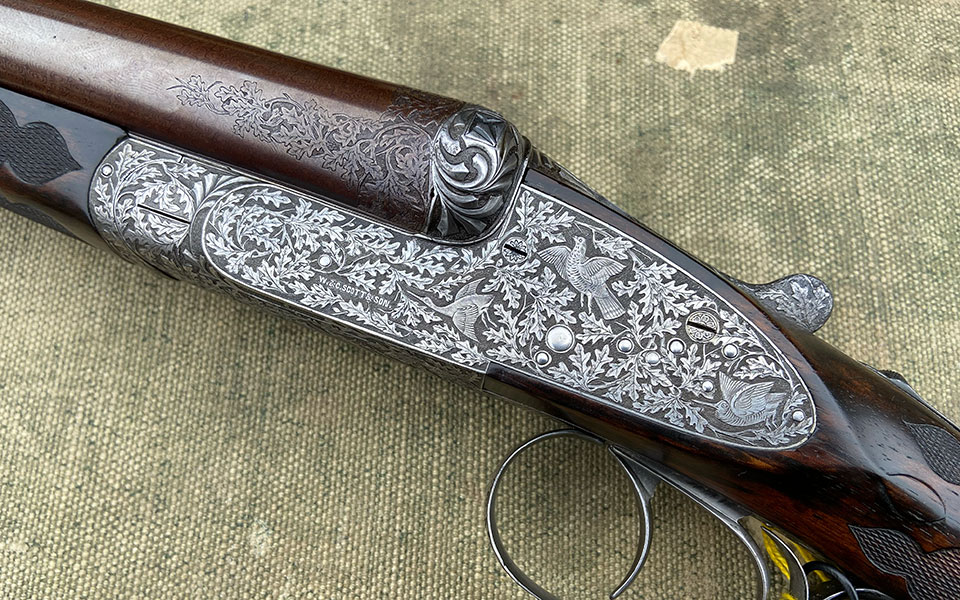
The gun featured here was made in 1897. The oak leaf carving is heavily influenced by the same William Morris fashion that was reflected in Holland & Holland's bold acanthus scroll engraving for the 'Royal'. Morris featured such patterns in his design books, which were heaviliy influential (thanks to Bob Mills for his samples indicating this).
This ornate style was very unusual for British guns of the period. Scott was mostly known for making guns for the trade in Britian but found a bigger direct retail market in the United States. In 1897, this gun would have cost £82. To put that into perspective; a Boss best sidelock was only £63, a best Stephen Grant sidelock was 63 guineas and a Holland & Holland 'Royal' was 50 guineas. Greener's best Facile Princeps was 70 guineas and Charles Lancaster's best gun was £65. That the Scott 'Premier Imperial' out-priced the best offerings of these prestigious London and Birmingham firms will surprise many readers, no doubt.
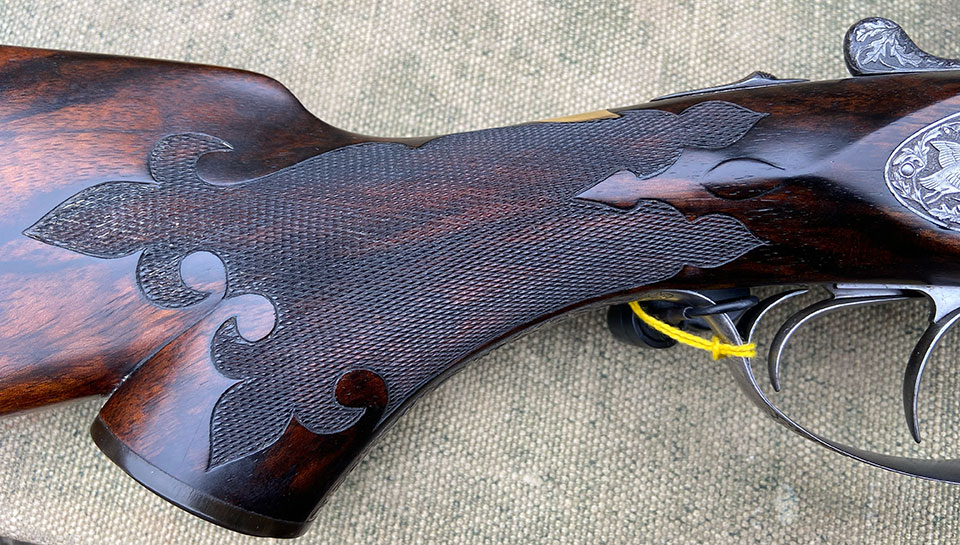
The rib on these damascus barrels is flat and filed in the manner of a pigeon gun. It is engraved with the words 'The Premier Imperial' in gothic script and the address of the firm's London shop: '78 Shaftsbury Avenue, London S.W. England.' Most British gunmakers would not put 'England' on the rib, as it was redundant when the home-market was the tarrget. No Englishman needed to be told where London is but overseas buyers might appreciate the reassurance that they were buying an English gun.
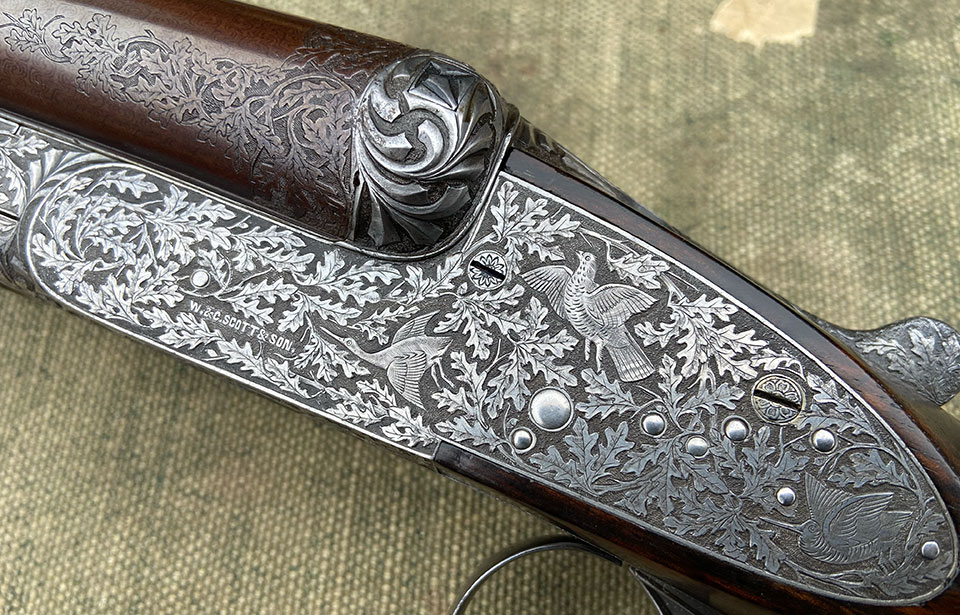
The carved relief oak leaf and avian subject matter is dramatic and includes depictions of woodcock, pigeon, duck, partridge and snipe with a black, matted background. The carved fences are particularly dramatic and well executed and the carving continues onto the top strap and the barrels.
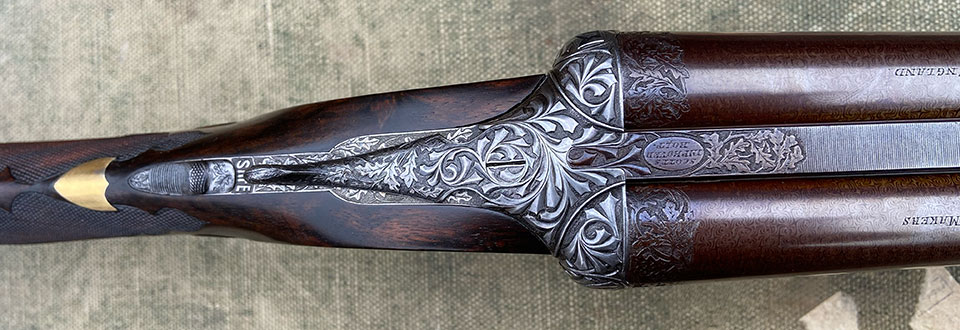
The tower logo, which can be seen on the barrel tube after the model designation is Scott's trade mark and can often be seen stamped on guns of Scott manufacture but named and retailled by another. In this case, Scott underscores the origin of the gun with the word 'MAKERS', for absence of doubt.
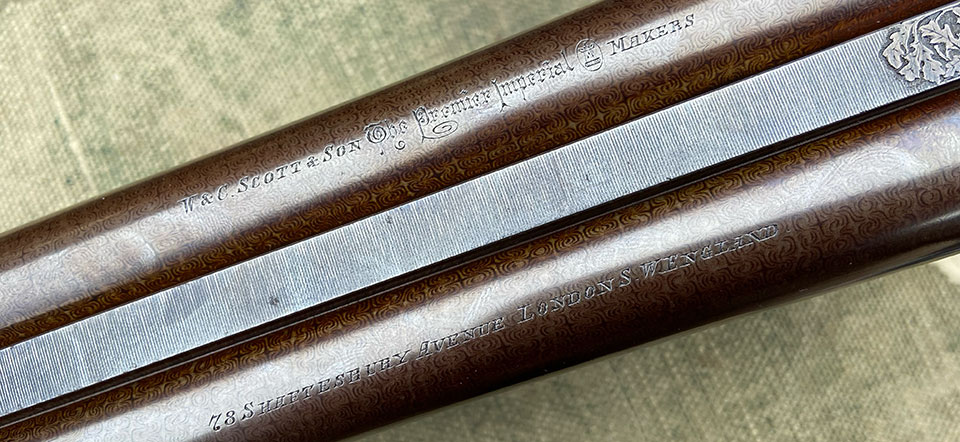
Some stylistic details show teh age of the gun. While it has handsome bar-locks, which were becoming more favoured than back-locks for best shotguns by 1897, and it is stocked to the fences, it does retain a through-lump, while most prestigious London firms were actioning guns with a solid bar and no lumps projectoug through the underside.
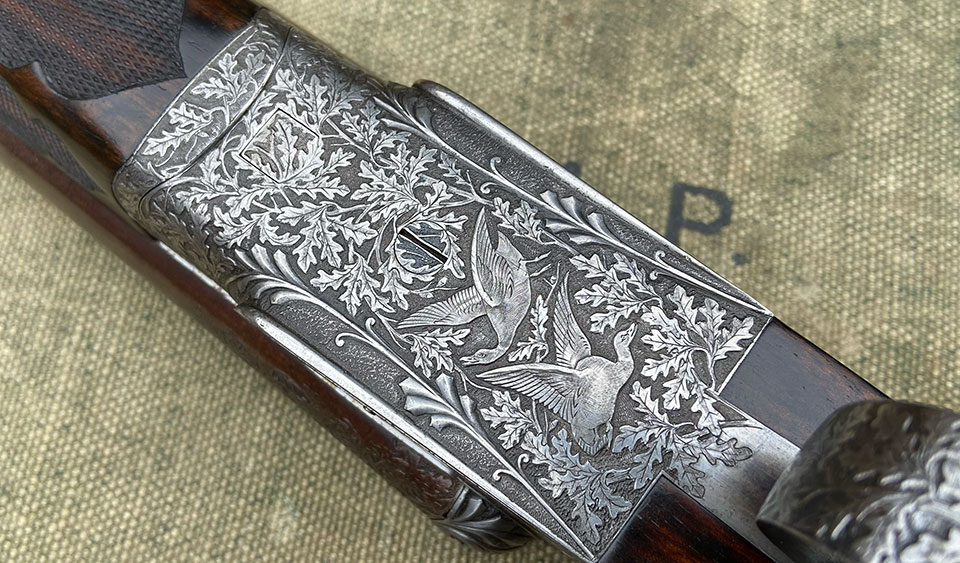
The oak leaf carving continues onto every part of the furniture and it complements the elabotrate chequer borders on the stock and forend, further distinguishing the gun from the normal, restrained British style.
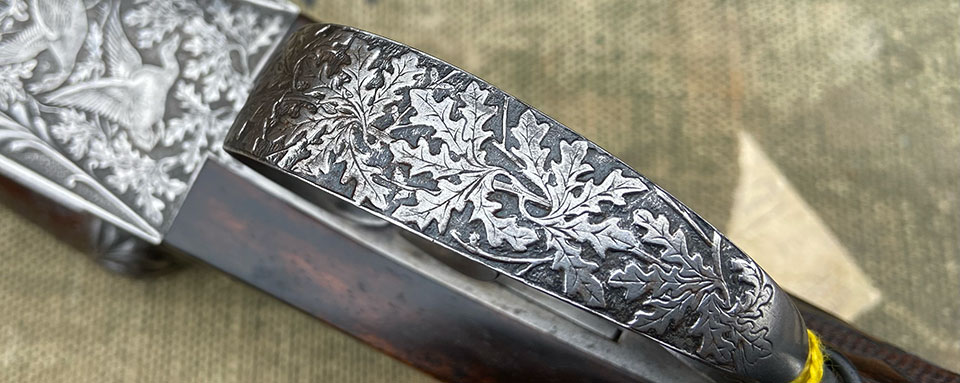
With its 28" barrels and 14 3/8" stock, the gun weighs 6lbs 12oz, which is standard game gun weight, despite the flat, matted rib and side-clip fences, which are more often seen on live pigeon trap guns. The Scott 'Improved Bolt' which is proudly declared on the breech end of the top rib is a square section equivalent of Greener's earlier 'Treble Wedge Fast' with its round-section cross bolt. By 1900, few London game guns bothered with third bites, with makers reserving them for pigeon guns, wildfowling guns and double rifles.
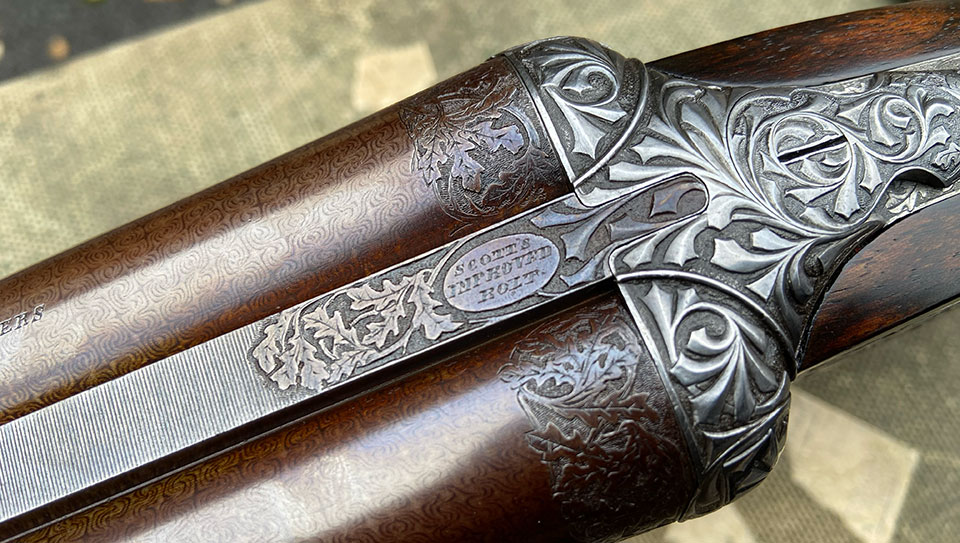
Today, these distinctive and visually impactful extra-best quality Scott guns still stand out from the crowd and command good prices. This one sold at aution in 2024 for £12,500. In the modern context, it would cost more than that to get an engraver to execute this pattern on a new gun.
Published by Vintage Guns Ltd on (modified )




